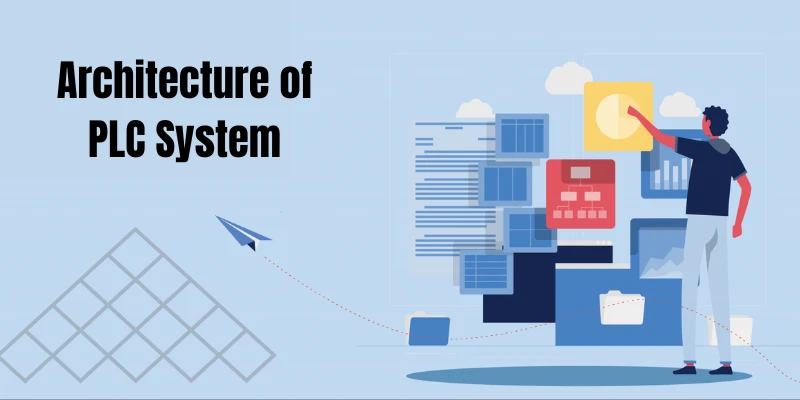Programmable Logic Controllers (PLCs) are the backbone of current industrial automation, controlling machinery and processes in various industries. Whether it’s manufacturing, energy, or transportation, PLCs are at the heart of controlling and monitoring systems. To gain hands-on experience and in-depth knowledge, you can explore PLC Training in Chennai, which prepares you for real-world industrial applications.
1. Central Processing Unit (CPU)
The CPU is the brain of the PLC, responsible for executing control instructions and logic. It processes all the input signals, runs the control program, and then determines the appropriate output. The CPU is composed of the following main parts:
- Processor: Executes control instructions written in a specific programming language (such as ladder logic, function block diagram, or structured text).
- Memory: Stores the control program, input/output data, and other necessary parameters for operation.
- Power Supply: Powers the CPU and other modules in the PLC system.
The CPU reads input signals, processes them using program logic, and generates outputs—much like how proper memory management in C++ programming ensures efficient execution and stability in complex, real-time control systems.
2. Input and Output Modules (I/O Modules)
The input and output (I/O) modules are essential components of the PLC system, allowing the controller to interface with external devices such as sensors, actuators, and switches. Matlab Training in Chennai can help you better understand signal processing and system simulation in such automation setups. These modules are responsible for converting real-world signals into data the CPU can process and vice versa.
- Input Modules: Receive signals from external devices like sensors, switches, and other field devices. This information can be digital (on/off) or analog (variable signals).
- Output Modules: Convert the processed information from the CPU into signals that control actuators such as motors, valves, or alarms.
I/O modules come in various configurations depending on the type and number of inputs/outputs required by the PLC system. They can be located directly on the PLC or installed remotely via communication networks.
3. Memory Unit
The memory unit of a PLC is where data is stored. Primavera Training in Chennai provides additional skills for managing automation-related projects. It stores data temporarily or permanently during the execution of the control program and has two main components.
- Program Memory: This part stores the actual control program, usually written in a language like ladder logic or structured text.
- Data Memory: Holds information related to the program’s execution, including input/output values, intermediate results, timers, counters, and flags.
Memory size and speed are crucial to the performance of a PLC, especially in systems requiring high-speed operations or complex control tasks.
4. Power Supply
Every PLC system requires a stable and reliable power source to function. The power supply ensures that the CPU, memory, I/O modules, and other components receive the appropriate voltage and current.
PLCs are typically designed to handle a wide range of voltage fluctuations, making them suitable for industrial environments where power supply conditions can vary. Some advanced PLCs have built-in power supply redundancy to prevent system failure in the event of a power issue.
5. Communication Modules
Modern PLCs are equipped with communication modules that allow them to interface with other PLCs, control systems, and external devices. These modules enable the PLC to send and receive data, often through industrial communication protocols such as:
- Modbus
- Ethernet/IP
- Profibus
- CAN bus
The communication modules ensure that PLCs in large-scale systems or distributed control systems can work together, exchanging information in real-time to coordinate actions and optimize processes.
PLC Programming and Operation
Programming the PLC
Programming a PLC involves writing instructions that guide the controller’s actions based on specific conditions. The Best Training Institute in Chennai offers practical training in PLC programming, where learners use PC-based software to create and transfer programs via USB, serial, or network connections.
The most common PLC programming languages include:
- Ladder Logic: A graphical language resembling electrical relay logic, widely used in industrial control systems.
- Function Block Diagram (FBD): A graphical programming language that represents logic in terms of blocks.
- Structured Text (ST): A high-level programming language similar to Pascal or C.
Once programmed, the PLC continuously executes the logic, responding to changes in input data and adjusting outputs accordingly. The Top 6 Reasons to Learn C++ Language highlight its efficiency, flexibility, and real-world applications.
PLC Operation Cycle
The operation of a PLC follows a cycle called the scan cycle. The cycle consists of three main steps:
- Input Scan: The PLC reads data from all input devices (e.g., sensors or switches).
- Program Execution: The PLC processes the data according to the control program logic.
- Output Scan: Based on the program’s results, the PLC updates the outputs to control actuators (e.g., motors, lights, or valves).
This cycle repeats continuously, often multiple times per second, allowing the PLC to respond in real-time to changes in the environment.
The architecture of a PLC system is fundamental to its ability to control and automate industrial processes effectively. By understanding the components—CPU, I/O modules, memory, communication interfaces, and power supply—we can see how each part works together to perform tasks such as machine control, process automation, and system monitoring.
